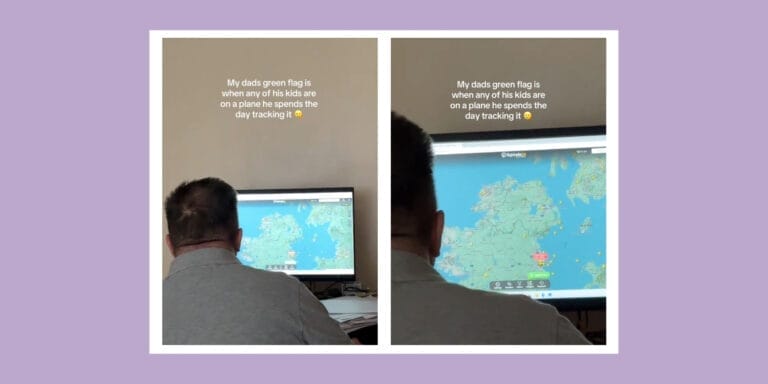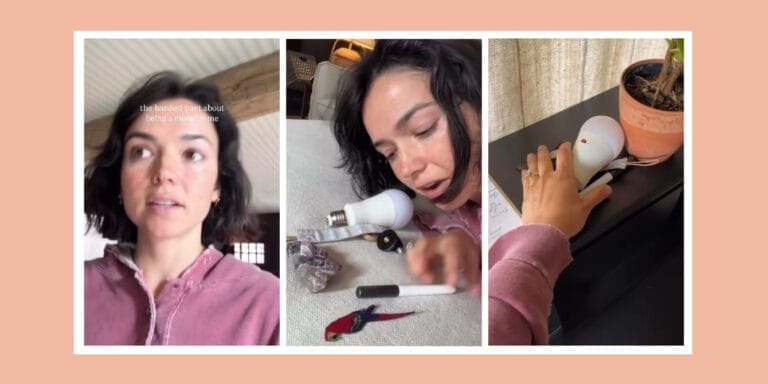5 ways to help your toddler manage change—minus the tantrum

Verbals skills + mastering their universe = turmoil, tears and opportunity.
Table of Contents
Having a toddler means new ways to communicate, now that she has developed quite the vocabulary.
Mama, all that talking can make you tired, but also excited and relieved that you have a little person to communicate with.
And at the top of your toddler’s growing vocabulary list is the word “no,” at times even accompanied by a yell, a stomp, or a wicked shake of the head.
So what makes your joyful toddler the apple of your eye one minute, and your stark adversary the next? Your toddler’s joy and the delight are still there, just temporarily set aside for a more important job—mastering her universe. Up till now, your little one navigated through life almost exclusively at your guidance. You taught her what things were, where things were, and how to communicate in order to get what she needs.
The difference now is that she has recognized that she has some control over her world and how she makes her way through it.
What does mastering her universe really mean for your tot? It means taking action to effect some change or result, which affords a sense of control. It means integrating prior knowledge with new explorations and beginning to link isolated behaviors together in meaningful sequences. So, a doll is no longer just for labeling “baby” and carrying around as some sort of transitional object. That doll may very well be held, rocked, fed, and put to bed by your toddler, who is learning to act out real-life and complex sequences.
Having said that, at this age, she is not entirely able to distinguish reality from fantasy, and her worldview is pretty much limited to what she experiences in the here-and-now. This egocentric stage where your toddler is on her own agenda and with only enough energy reserves to tackle these pursuits, combined with limited resources for reasoning, is what brings about your little “Mary Mary, quite contrary.”
So, while it seems perfectly reasonable to suggest to your toddler, who is engrossed in smothering his toy car with playdoh to see if it will still roll down his homemade ramp, that it is time to wash his hands for dinner, he likely experiences that as a fatal disruption to his life’s work with no possibility of return. Drastic, right?
It is the true nature of toddlerhood to experience much turmoil with the mere suggestion of a transition.
Luckily, there are some strategies you can try that allow you to see life through your toddler’s eyes and facilitate transitions, while minimizing battle wounds for both of you:
1. Understand
First and foremost, take a step back to make sense of your toddler’s experiences, considering both what brings her joy and under what circumstances you are seeing the most resistance. Specifically, seek to understand:
- What your child is going through developmentally. It may seem as though toddlers are a bottomless pit of energy, but managing transitions, changes, and demands, while also exercising autonomy actually requires significant effort and can be exhausting for the little one who is hard at work mastering his universe.
- What the function of the resistance behavior is. Is it to gain or prolong access to a preferred activity, or is your request unfamiliar and possibly anxiety-provoking
- What the child is feeling in the moment and why. Even if the reaction seems excessive for the situation, the underlying emotional experience is valid.
- How your child’s resistance affects you. Know that you are not alone. Lean on your other mama friends to exchange the good, the bad, and the ugly. It can be both insightful and replenishing.
2. Model
Never underestimate just how important you are in teaching your child how to cope with challenges, by how you do it yourself. Try modeling:
- Narrate your own struggles with things not moving along in the way you hoped or planned. For example, “I feel so frustrated that we ran out of pasta sauce. I’m going to need to come up with a new plan for dinner. I think I can do that!”
- Resist the urge to meet your child’s resistance with resistance. If we want to shape our children into being flexible problem solvers, we can model this when faced with the problem of a little defiant one. Take a deep breath and use validation and problem solving (see tips below) to proceed with both reason and compassion.
- Use alternatives phrases. “I don’t think so,” “Maybe not,” or even simply “No, thank you,” can help minimize the sting of an outright “No.”
3. Anticipate
Chances are, you’ve have started to see clearly what makes your toddler tick, so anticipating some challenges with getting your toddler to shift gears can help you navigate those trying moments with greater ease. Pay particular attention to what tends to set off your tot the most, and take some preventative action by using one or more of these tips:
- Offer choices so that she retains her sense of control. “Do you want to use a spoon or a fork to eat your peas?” and, “Should we wear the tiger jammies or the princess ones?”or, “Is mommy or daddy going to be toothbrush helper tonight?” all provide options for her to consider and choose.
- Deliver your expectations in a fun, creative, or easy manner. For example, “I’ll race you to the bathroom!” or, “I wonder if you got any new teeth, we better count each one we brush to be sure!”
- Offer something preferred to accompany her less preferred transition. Statements, like, “Monkey wants to hear the bedtime story tonight—quick, take him to find the best spot on the bed for him!” serve to provide her with perceived control over the process.
4. Validate
When your toddler starts to crumble, recognize the tragedy that he is experiencing in a genuine, interested, and compassionate way. There is always some rational sense underlying the extreme reaction. A little empathy can often be just what is needed to move your toddler from “No” to go. Use these important tips for validating:
- Empathize with how your child feels. Phrases like, “You’re mad because you have to stop playing to get ready for bed,” and, “It’s sad to break a favorite toy,” or, “It’s hard to be away from blankie, and blankie will be so happy to feel clean again!” are infinitely better than ignoring their emotions.
- Never validate the invalid. You don’t want to find yourself saying, “You’re right, mommy is bad,” but you can say, “I understand, you’re upset with mommy because I can’t stay and play trains with you.”
Remember that reasoning with them is not the same as validating them. Toddlers are notoriously deficient in their reasoning abilities, but moreover, a pull towards logic and rationality when someone is stuck in an emotion mindset can further polarize the experience. Joining your child by understanding his experience allows you to walk gently with him towards a balanced view that incorporates both logic and emotions.
5. Problem-solve
Lastly, carefully crafting a concoction of a few of these skills can often be just the right dose of flexibility to get your toddler moving and not resisting. Problem solving can happen when we:
- Validate the feeling and the experience, model communication about it, present choices, and add in a creative twist to make it enticing. For example, “You really like that puzzle and we are just looking today. I can see you feel pretty sad about that. What can we do to feel better? Should we take a picture of you with the puzzle or have a puzzle play-day at home?”
- Anticipate a tough transition, model getting through it with calm communication and empathy. Restating what you see and what your child may feel, like, “I know you love the toy store. Sometimes we go there and buy things for home, and sometimes we get to buy special surprises for other kids. Today, we are picking out a toy for your cousin. Do you want to help choose the wrapping paper or the bow? Your cousin will feel so special and so happy if you are the helper!” have a better chance of being heard and absorbed than simply reacting to your child in the midst of a situation.
Your toddler is undergoing quite the transformation and the likely truth is that you are both experiencing the growing pains from this phase. As your little one immerses himself in his new world in which he is becoming master, take pride in his achievements and in your own, because, Mama, you have created this secure universe for him.


































